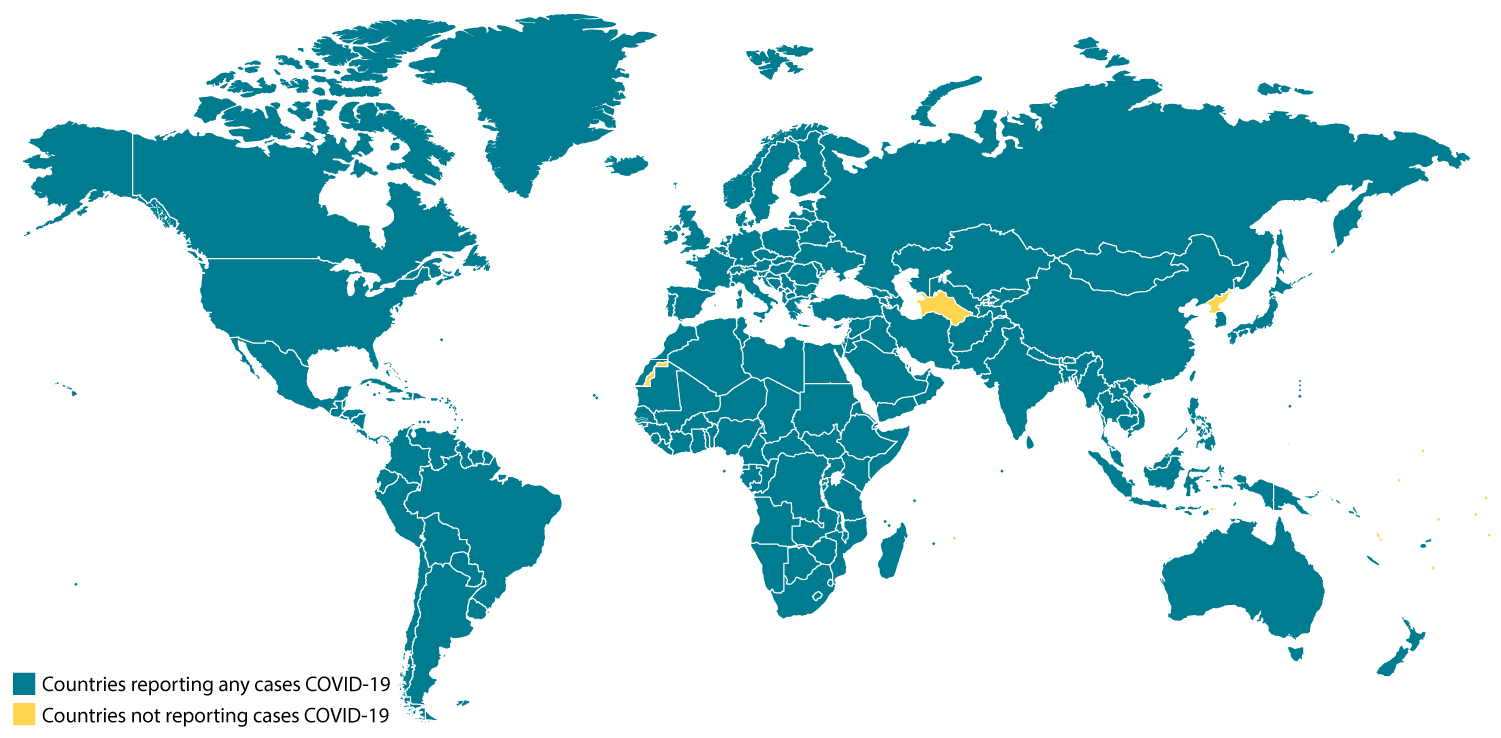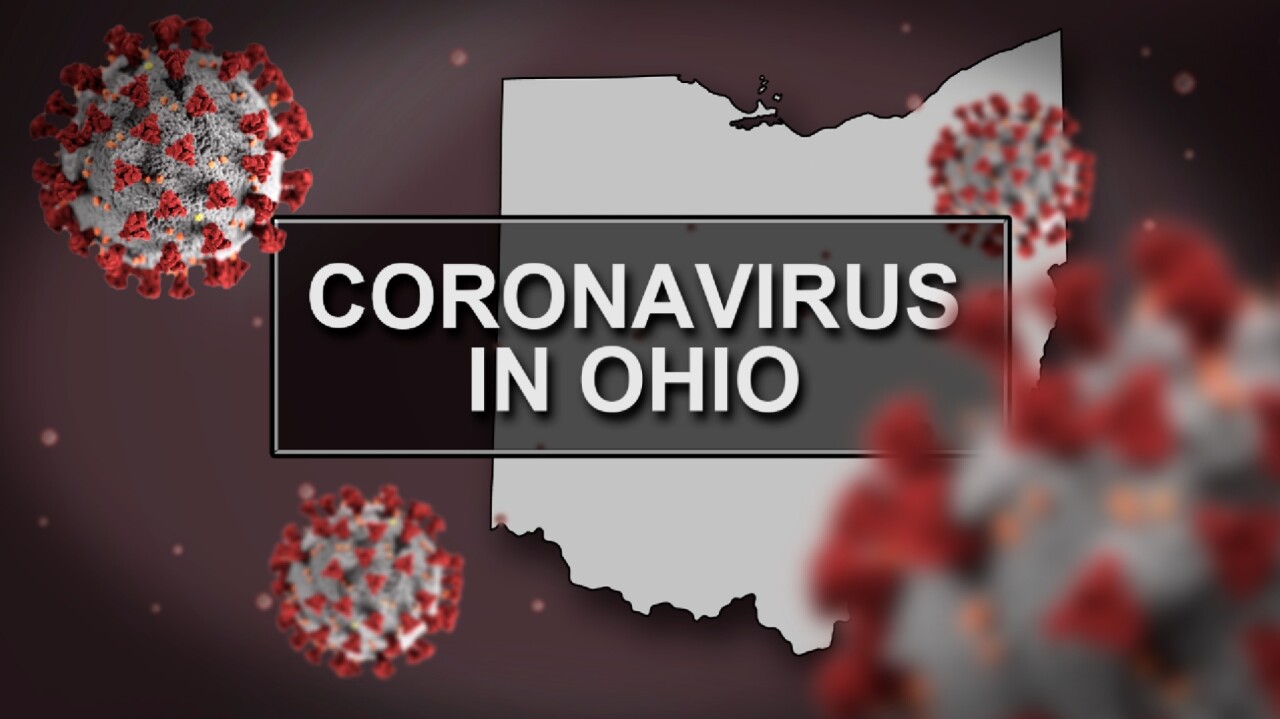CLEVELAND — Unemployment in Ohio has risen during the COVID-19 pandemic, with more than 111,000 Ohioans filing for unemployment benefits since Sunday, according to new numbers put out by the Ohio Department of Jobs and Family Services.
This week, 111,055 in the state have filed claims since Sunday. Last week, less than 4,000 people filed for unemployment over the same span of days.
RELATED: Everything you need to know about applying for unemployment benefits during coronavirus pandemic
The chart below shows the number of people who filed for unemployment compared to last week:
Individuals can file their claims at the Ohio Department of Job and Family Services website. We’ve included step-by- step instruction on how to file for unemployment benefits here. Heads up: We're hearing from folks this can be a frustrating process.
Since Sunday, thousands of Ohioans have found themselves without a job after Gov. Mike DeWine announced the closures of bars, restaurants, barber shops, BMVs and gyms, among others.
To help mitigate the fallout from these closures, DeWine signed an executive order to create unemployment compensation for employees without paid leave at work.
By signing an executive order, employees impacted by the shutdowns and social distancing will have access to unemployment benefits. Under the current law, there’s a one-week waiting period to receive unemployment, but under the executive order payments will be expedited and the current week-long delay will be waived for employees to receive immediate benefits.
On Wednesday, President Trump signed a coronavirus response bill, which includes free coronavirus testing, expanded family and medical leave for some, paid emergency sick leave for some, unemployment benefits, food assistance, and protections for health care workers.
The bill authorizes $500 million to provide access to nutritious foods to low-income pregnant women or mothers with young children who lose their jobs or are laid off due to the COVID-19 emergency.
For a look at how one small business is dealing with all of these rapid changes, watch reporter Kevin Barry's story about how one salon owner is managing.
Additional Coronavirus information and resources:
Read our daily Coronavirus Live Blog for the latest updates and news on coronavirus.
Below you can find information and resources on novel coronavirus, COVID-19, from local, state, national and international organizations, including the Cuyahoga County Board of Health, the Ohio Department of Health, the Centers for Disease Control and Prevention, and the World Health Organization.
News 5 will continue to update this section with new information, resources, links, and more as it is made available.
COVID-19/2019 Novel Coronavirus Overview from the CDC:
What is coronavirus disease 2019 (COVID-19)? Coronavirus disease 2019 (COVID-19) is a respiratory illness that can spread from person to person. The virus that causes COVID-19 is a novel coronavirus that was first identified during an investigation into an outbreak in Wuhan, China.
Can people in the U.S. get COVID-19? Yes. COVID-19 is spreading from person to person in parts of the United States. Risk of infection with COVID-19 is higher for people who are close contacts of someone known to have COVID-19, for example healthcare workers, or household members. Other people at higher risk for infection are those who live in or have recently been in an area with ongoing spread of COVID-19. Learn more about places with ongoing spread here.
Have there been cases of COVID-19 in the U.S.? Yes. The first case of COVID-19 in the United States was reported on January 21, 2020. The current count of cases of COVID-19 in the United States is available on CDC’s webpage here.
How does COVID-19 spread? The virus that causes COVID-19 probably emerged from an animal source, but is now spreading from person to person. The virus is thought to spread mainly between people who are in close contact with one another (within about 6 feet) through respiratory droplets produced when an infected person coughs or sneezes. It also may be possible that a person can get COVID-19 by touching a surface or object that has the virus on it and then touching their own mouth, nose, or possibly their eyes, but this is not thought to be the main way the virus spreads. Learn what is known about the spread of newly emerged coronaviruses here.
Download and read the CDC's full "What you need to know about coronavirus disease (COVID-19)" information sheet here.

Global case numbers are reported by the World Health Organization (WHO) in their coronavirus disease 2019 (COVID-19) situation report.

Coronavirus in Ohio:
As of Monday, March 16, there were 50 confirmed cases of coronavirus in Ohio. Cuyahoga County remains the county with the highest number of cases in the state with 24. There are 6 in Butler, 2 in Belmont, 3 in Franklin, 1 in Geauga, 3 in Lorain, 1 in Lucas, 1 in Medina, 3 in Stark, 2 in Summit, 2 in Trumbull and 1 in Tuscarawas.
ODH Director Amy Acton revealed that their department believes that at least 100,000 Ohioans are currently carrying the disease, a claim that has made national headlines.
Governor's Orders
Since Wednesday, March 11, Governor Mike DeWine has issued the following orders:
-A limit on visits to nursing homes and an order to hold sporting events without spectators. Since that time, almost all professional, college and high school sporting events have cancelled, and DeWine issued an order restricting all visitors to nursing homes and assisted care facilities, with exemptions for end-of-life care.
-A prohibition on "mass gatherings" of over 100 people. Another order on March 16 reduced gathering size to 50 people, per the CDC's current guidance.
-An order to close all Ohio K-12 schools for three weeks beginning at the end of the school day on Monday, March 16.
-On March 13, DeWine announced several new steps the state is taking to prevent the spread of coronavirus and provide relief to Ohio's residents, including an order stopping visitations at county jails, providing free breakfasts and lunches to Ohio's K-12 students, and a request to the Trump administration for regulatory and other relief as necessary.
-On March 15, DeWine ordered that all bars and restaurants in Ohio close, and serve customers through carry-out and delivery only.
-On March 16, DeWine announced his recommendation that the Primary Election on March 17 be postponed to June 2, and that mail-in absentee voting be extended. Secretary of State Frank LaRose supported the recommendation. A lawsuit was filed but rejected by Franklin County Judge Richard Frye. Mere hours before polls would have opened, Ohio Dept. of Health Director Amy Acton ordered the polls closed as a public health emergency.
Coronavirus' Impacts in Northeast Ohio:
Since the announcement of confirmed cases in Ohio, a number of local events, schools, facilities and more have announced closures, cancellations, postponements and changes as a result of coronavirus. News 5 is working to keep this information updated in the links below:
Here's a list of things in Northeast Ohio closed due to coronavirus concerns
Multiple Ohio colleges suspend in-person classes due to coronavirus concerns
The City of Cleveland has canceled its St. Patrick's Day Parade and the Cleveland International Film Festival, and issued a civil emergency in response to COVID-19.
More resources from News 5 and affiliates:
News 5's Coronavirus continuing coverage page
Symptoms
The symptoms of coronavirus are fever and lower respiratory tract issues, such as cough and shortness of breath, according to the Cuyahoga County Board of Health.

Travel
Anyone traveling internationally should review plans in advance of their trip, and check the CDC’s COVID-19 Travel Information Page for daily updates and travel alerts.
Click here for the CDC COVID-19 Travel Information Page
Practice Good Hygiene
The CCBH recommends the following good hygiene practices to prevent coronavirus, as well as the flu, colds and other illnesses:
Sneeze or cough into the bend of your elbow to keep germs from spreading
Regularly wash your hands with soap and water/use alcohol-based hand sanitizer in between
Don’t share cups, spoons, forks, etc. with anyone
Don’t make food for anyone if you are sick
Don’t go to work or school if you are sick
Visit a doctor, urgent care or emergency department if you are sick – don’t take chances
Please contact your medical provider with any questions.
Guidance for those with compromised immune systems
Click here for specific guidance from the CCBH for anyone at higher risk for becoming ill.
Additional Resources
Cuyahoga County: See the CCBH page on coronavirus here.
Ohio Department of Health:
Click here for the Ohio Department of Health’s Coronavirus information page.
It is updated daily at 2 p.m. with the current number of confirmed cases, persons under investigation and persons under investigation who tested negative for the disease.
More resources from ODH:
Fact sheet
Prevention infographic
Resources and information
Fact sheet
Ohio Secretary of State:
What you can do to stop the spread of COVID-19
Corona Facts: Ohio Secretary of State Frank LaRose has launched a web page dedicated to providing facts about coronavirus' impacts on voting and the Primary Election in Ohio.
If you are sick with COVID-19 – English
Preventing spread of COVID-19 at election/polling/voting locations
Centers for Disease Control and Prevention
Prevention and treatment
Homepage for COVID-19 materials and information
Symptoms – overview
Fact sheet
What you can do to stop the spread of COVID-19
World Health Organization
Coronavirus information
Mythbusters – the truth about food, packages, pets and other things related to COVID-19
Prevention and treatment
Video – What is COVID-19?
Video – What is my risk of getting COVID-19?
Video – How can I protect myself from COVID-19?
World Health Organization
Coronavirus information
Mythbusters – the truth about food, packages, pets and other things related to COVID-19
Video – What is COVID-19?
Video – What is my risk of getting COVID-19?
Video – How can I protect myself from COVID-19?

